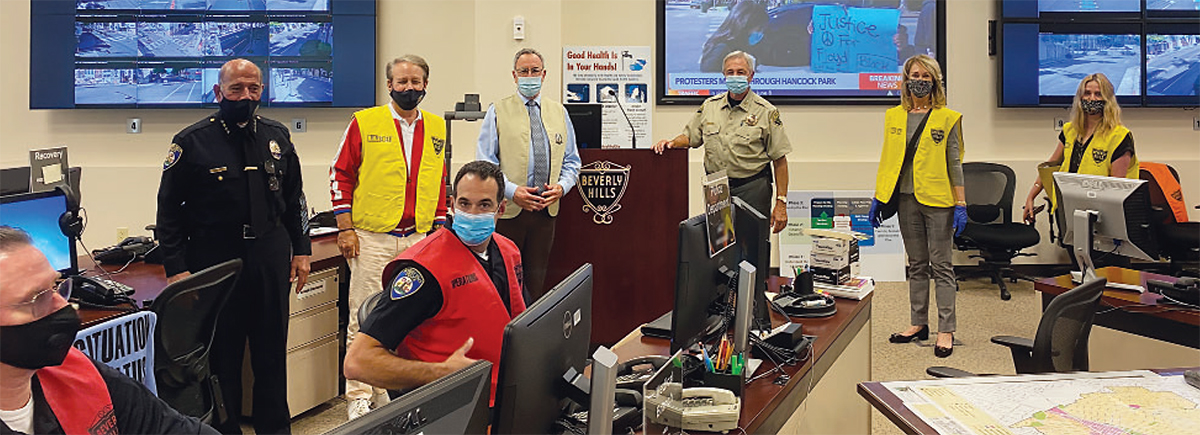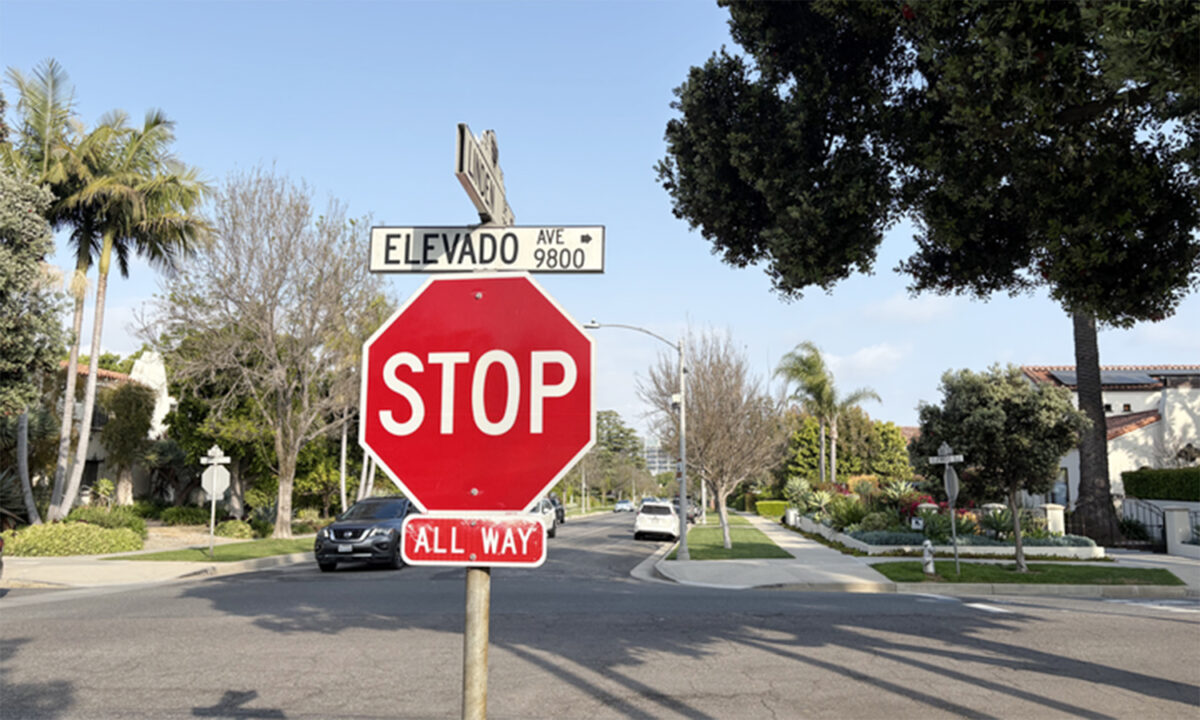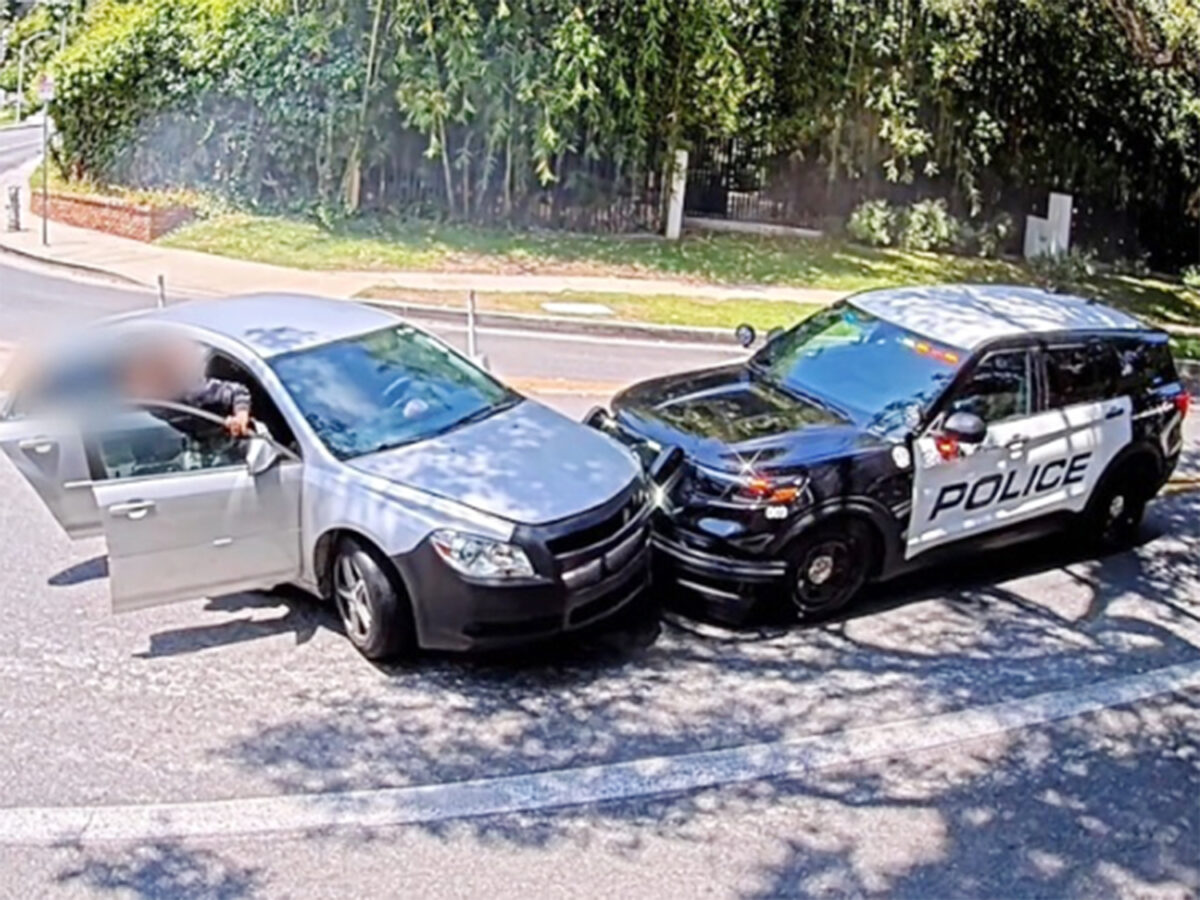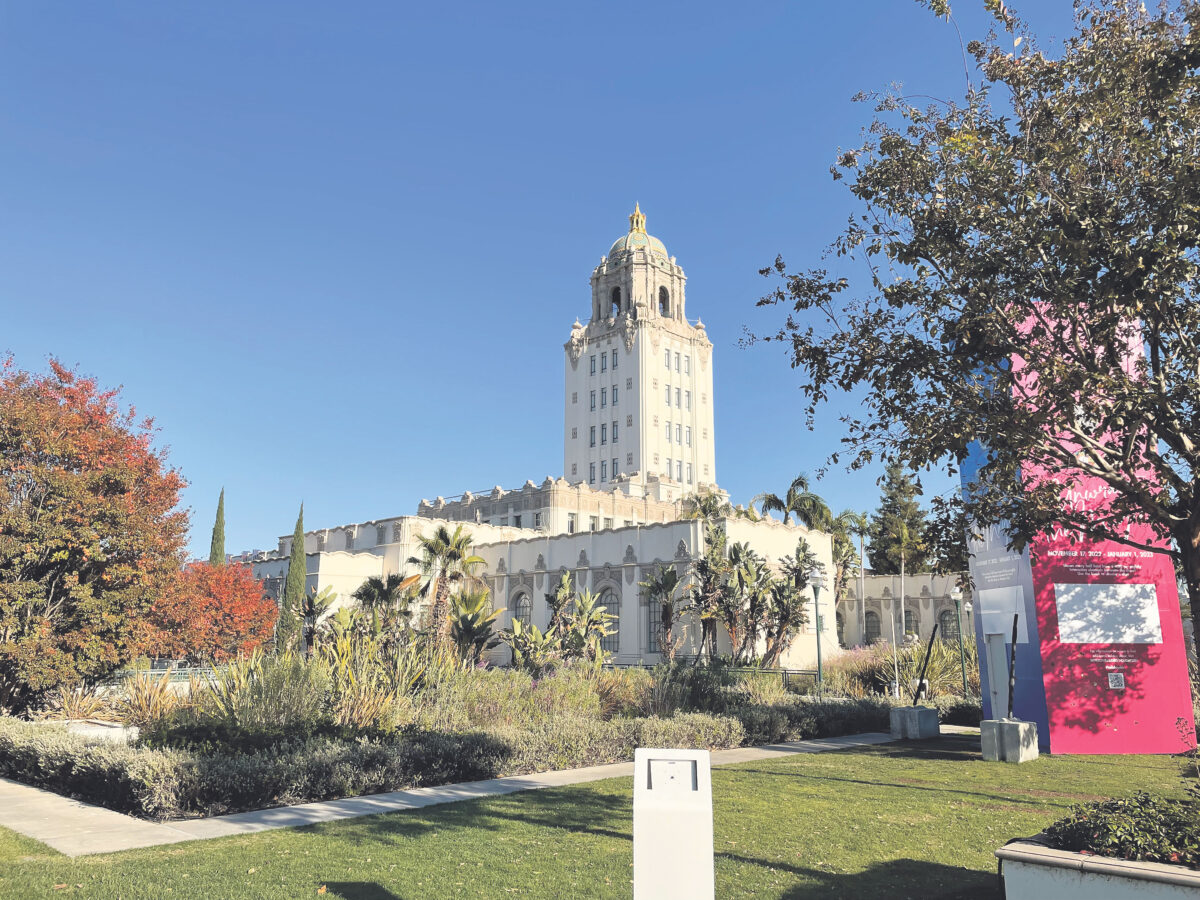Also by Bianca Heyward
On Friday, May 29, at an undisclosed secure location, the Beverly Hills Emergency Operations Center (EOC) was dark and empty. Computers were dormant, except for those operating remotely, due to the COVID-19 crisis. The next morning, Saturday, large crowds of people took to the streets to protest police brutality following the death of George Floyd at the hands of four Minneapolis police officers. As the protestors moved to midtown Los Angeles, representatives from each department in Beverly Hills mobilized. City personnel from every government
department knew that morning that they were to report to the EOC. The field commander in the Mobile Command Center was in position. By late morning, the EOC was manned and ready. As news of police cars burning and looting spread, the EOC learned that Rodeo Drive may be targeted. By Monday, the National Guard was deployed and on the ground in the City. Seven days later, the Guard was gone.
Inside, City and law enforcement officials wear different colored vests to quickly identify their respective roles within the
EOC. No time can be wasted. Surveillance from the City’s approximately 1600 cameras is broadcast in real time on countless computers and 12 television screens amidst the bustling of the City employees. Usually, the EOC is activated just a few times a year for large-scale, high-profile events such as the Golden Globes, the Vanity Fair party, the Los Angeles Marathon and Presidential visits. Otherwise, during an ordinary week, the designated emergency space is vacant. Last week was anything but ordinary.
The assigned seating is organized into five groups: the management division, comprised of public information, safety, legal and management liaisons; operations, including representatives from Public Works, Police and Fire Departments, Community Services and Community Development; planning and intelligence, overseeing the overall plan of procedure and maps; logistics, comprised of departments that coordinate supplies, personnel, information technology and transportation; and finance, responsible for how the operation will be funded. Structurally, the EOC centralizes the various departments to streamline the flow of information and communication during times when each second matters.
A whiteboard states that, among many other goals, the EOC’s mission is to provide safety for the people of the City, reduce property loss, protect the environment, allocate emergency response resources and be a hub for the City’s emergency operations.
Following the horrific death of George Floyd at the hands of a Minneapolis police officer, hundreds of thousands of citizens mobilized across the country taking to the streets to protest police brutality. Beverly Hills was no exception.
The City Council held an emergency closed door meeting the morning of May 30 after seeing large crowds of protesters making their way to Beverly Hills from neighboring West Hollywood. The City Council and City Manager, George Chavez, directed the Beverly Hills Police Department to use all their resources to protect every square foot of City. Interim Chief of Police Dominick Rivetti disseminated the orders to his department within minutes.
The BHPD has cultivated close relationships with the Los Angeles Police and Fire Departments, and the Santa Monica, UCLA and Culver City Police Departments, which sometimes come together to form a larger public safety entity. During the afternoon, BHPD officers embedded with LAPD and LAFD relayed real time information back to the EOC. The City’s cameras broadcasted eerily quiet surveillance footage to the televisions inside the EOC.
Soon, reports coming in from east of the City required immediate attention. Swaths of protesters, a larger group than expected, were marching down Beverly Boulevard from the Fairfax district towards Beverly Hills. Even with a robust plan outlining how to proceed in an emergency, the unusual nature of these protests required more resources than what the BHPD had in place. “The minute we could see the crowds, we got the cameras connected to that part of the City,” Rivetti told the Courier. “And so, we knew what we were dealing with the minute they hit Burton Way, but we also had the intelligence from our other law enforcement partners.”
Before long, a crowd of 2,500 demonstrators entered the City. “We were fully staffed and fully in the field,” said Rivetti. The protestors led a civil sit-in on Rodeo Drive, completely within their rights. Others began to tag City Hall, the police station and various other buildings and businesses.
Coordinating with officers from the mobile command center – a motorhome outfitted to duplicate a dispatch center staffed with a Captain, Lieutenant and officers – Rivetti made a decision. Drawing on best practices and lessons learned from law enforcement agencies around the country, the Chief weighed whether the benefit of extracting sole vandalizers against the cost of more violence, rioting and potential loss of life. As chief, the decision was his to make. “We’re not going to move into a crowd of 2,500 people to make an arrest for nothing more than graffiti,” he told the Courier. “It was a strategic decision.” With 135 BHPD officers in the paramilitary structure, the police were outnumbered by nearly 20-1.
While blocking traffic is an ordinance violation, the BHPD took the posture of remaining out of sight, but in the area, deploying officers on motorcycles and bicycles to control traffic. “The way that we could stop 2,500 people from coming into this city on that particular day would be to violate 2,500 people’s constitutional rights,” Rivetti said. Assistant Chief Marc Coopwood added, “Absent there being a life that was about to get lost or somebody was going to get seriously hurt.”
Another group of protestors was approaching. “We knew right away through different intelligence sources that a criminal element was intertwined” among the protesters of the second group of over 1,000 protestors, Rivetti told the Courier. Soon, civil unrest permeated the streets, blocking traffic on Santa Monica Boulevard.
The City’s resources were strained to capacity and additional resources were required. Manpower and vehicle requests were subsequently initiated through the Los Angeles County Emergency Operations Bureau. People committing unlawful acts had woven themselves into the crowd of lawful protesters. Shortly afterwards, between 40 and 50 deputies were in Beverly Hills assisting the police department through the evening. “A lot of the resources that we deployed, like police officers and safety personnel, were driving in plain cars because we didn’t have many more police vehicles,” Rivetti told the Courier.
When describing the need for mutual aid, Rivetti equated the scenario to that of a blazing wildfire. If the fire department arrives on the scene to find the fire is out of control, and beyond their capabilities, the firefighters call in for support from partnering departments. When the police department is met with a situation that surpasses their capabilities, they too call for assistance from the surrounding area.
By late afternoon, the first crowd of roughly 2,500 mostly law-abiding protesters had moved on, and a second group entered the City with embedded violators and looters dominating the protestors’ impassioned message. BHPD officers blocked off Rodeo Drive to both pedestrian and vehicular traffic to prevent further property damage and theft. Still, members in the crowd got through the barricades, looting boutiques on Rodeo Drive and neighboring business blocks, defacing City infrastructure and damaging businesses.
As the sun began to set, the streets filled with what felt like anarchy. During this time, in the EOC, the City’s security cameras were showing – in real time – rocks, bottles, metal locks and pipe wrenches being thrown at police officers in the field. Rivetti responded to these assaults by calling for dispersal orders. Within moments, the helicopters circling above declared to the rioters to disperse and the City was instituting
a curfew. When the crowd below disregarded the announcement, they were considered to be unlawfully assembled. The BHPD deployed tear gas to force the dispersal of the stragglers.
BHPD quickly pivoted to confront the people burglarizing. “We had arrest teams preplanned and deployed them as soon as it was safe enough to do that,” Rivetti told the Courier. “We made a lot of arrests that night. We recovered a lot of merchandise, and we recovered a lot of evidence,” said Coopwood. “Once this all settles down, we’re going to make more arrests based on what happened two Saturdays ago, and we have this all on camera. We’re going to create a small task force to go after these people who victimized our community and we are going to bring them to justice,” added Coopwood.
Sixty-eight persons from the local area and out of state were arrested. Approximately 100 businesses were vandalized.
By Sunday morning on May 31, 100 members of the National Guard were on the ground in Beverly Hills assisting local law enforcement. “We have a very balanced approach, protecting not only the business community, but the residential community,” Rivetti told the Courier. “When we had the National Guard here, they were very visible in the business community. That freed up all of the Beverly Hills police officers to protect the rest of the City.” The BHPD enlisted non-law enforcement agencies by using their vehicles – having the seal of Beverly Hills and red flashing lights – to aid the police department in patrolling the city and being a “force multiplier.” The police department also called on non-City agencies, including correctional officers based out of Chino, special agents from the Los Angeles County District Attorney’s Office Bureau of Investigation, officers from the Santa Paula police department and military police sent by the United States Air Force to patrol the residences.
The City’s Public Information Manager, Keith Sterling and his colleagues were lauded by other Los Angeles media outlets for the City’s quick news dissemination. Sterling told the Courier, “As much as we and our neighboring communities prepared, this was an unprecedented event. The amount of people that came into our City was a record. And as much as we prepared, we needed additional resources to be able to manage. And that’s what we did over the night.”
As the days unfolded with curfews set in Beverly Hills, protests continued. One of the key tactics used in the EOC, with the help of neighboring law enforcement agencies, was the ability to identify and work with organizers of the protests.
The afternoon of June 2, tensions were high on South Santa Monica Boulevard and Rodeo Drive, where the Courier observed an impasse between the Beverly Hills Police and a throng of protestors. The crowd chanted “Take a knee” as they faced a phalanx of officers. Officer Don Chase approached the demonstrators and took a knee as a show of unity. He spoke with and listened respectfully to the protestors, who moved in close to him, attentively. After a few minutes of heartfelt discussion, the crowd began shouting the officer’s name approvingly. And, they dispersed peacefully before the 1 p.m. curfew. The Courier captured the moment on video, which was broadcast to millions of viewers on Spectrum News.
The following day, in the EOC, the Courier had the unique opportunity to speak with Mark Pazin, Chief of Law Enforcement and Homeland Security for the California Governor’s Office of Emergency Services (OES). Pazin happened to be working out of the BHPD EOC that afternoon, overseeing the state’s resources. Namely, the National Guard in our very City. Sharing his philosophy on law enforcement during emergencies, Pazin told the Courier, “Once we leave that door, everybody’s on the same page. One team, one fight. That’s the motto.” Pazin was appointed by former California Governor Jerry Brown in 2014 and then transitioned with Governor Gavin Newsom.
A record 10,000 protesters marched through the City during the week – after Saturday May 30, all peaceful and calm. Groups of teenage girls were handing out cold bottles of water to demonstrators. Parents walked hand in hand with their children and dogs, using the historic moment to educate the next generation. Front line responders, doctors, fellows and medical students, just off their rounds from local hospitals, in surgical blues, were seen marching, while offering water bottles and first aid.
On June 9, the day the funeral for George Floyd was held in Houston, Texas, Rivetti told the Courier, “We will continue to watch your homes and respect all person’s constitutional rights keeping the safety of our residents and our business community in mind.” When asked how he can assure the community that they are going to be safe, the Chief responded, “Well, we’re going to do what we’ve always done. That is to give 110 percent of our energy to make Beverly Hills a safe community. We’ve been doing that here for the last hundred years, plus. And we’re going to continue to do that. The City has the police department’s full commitment.”








